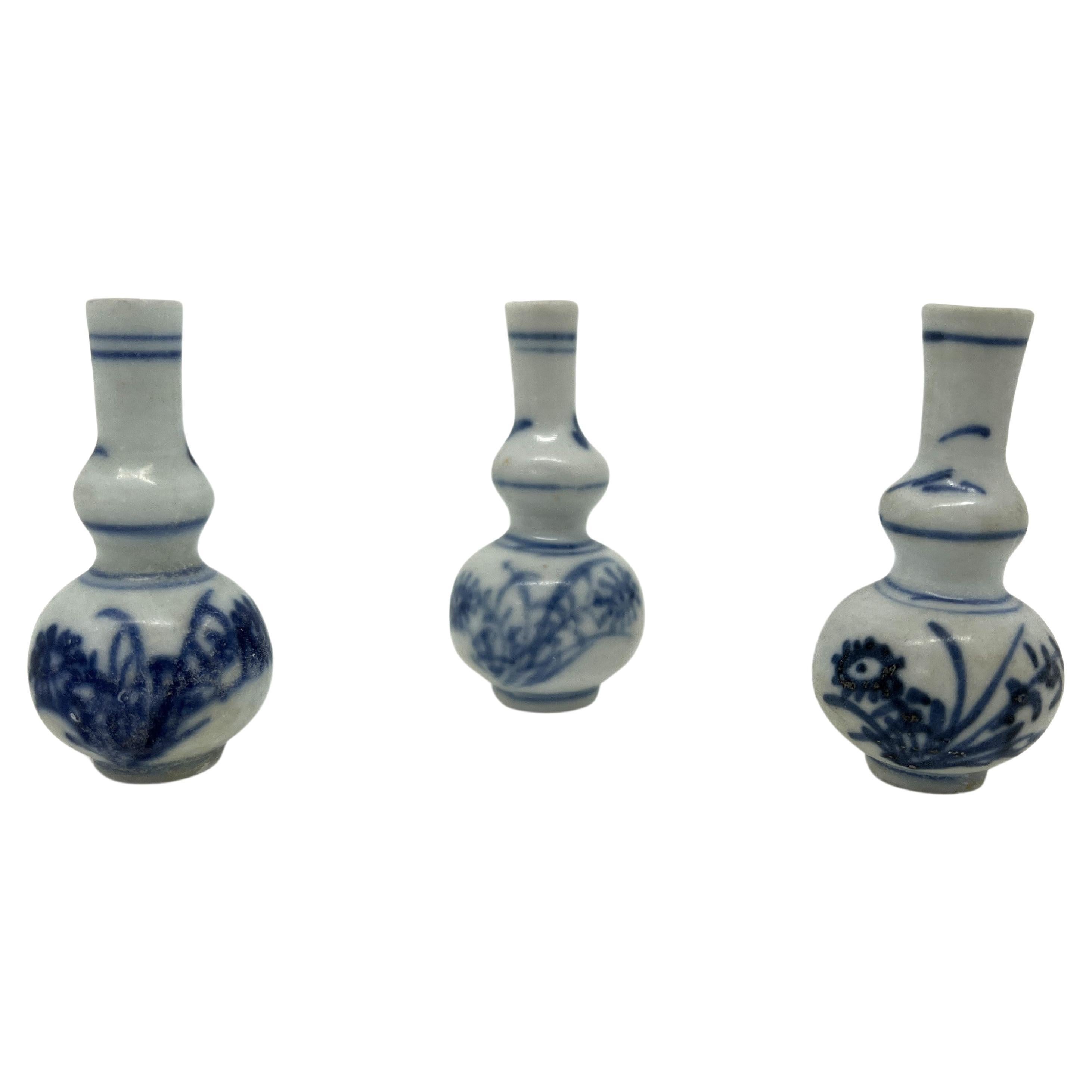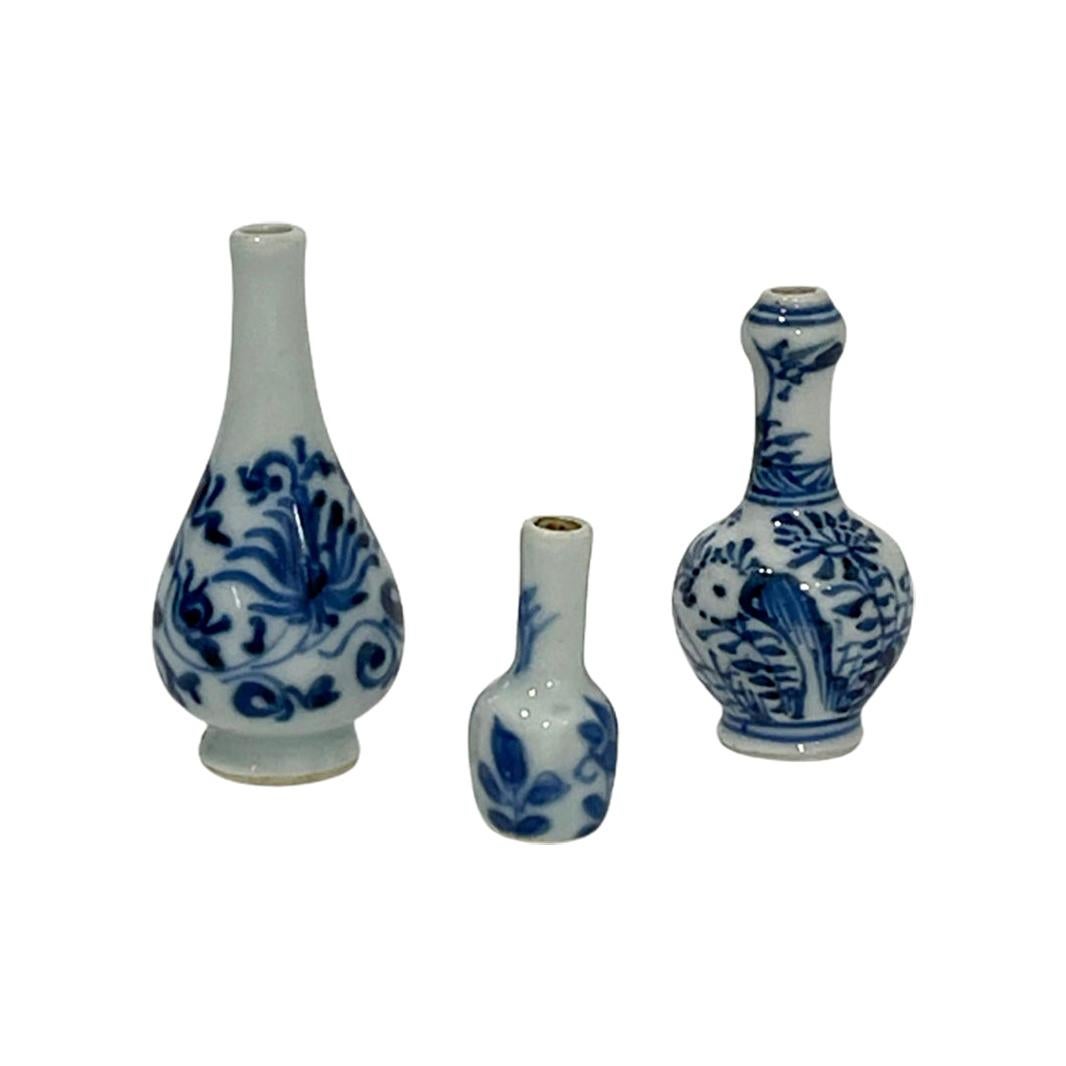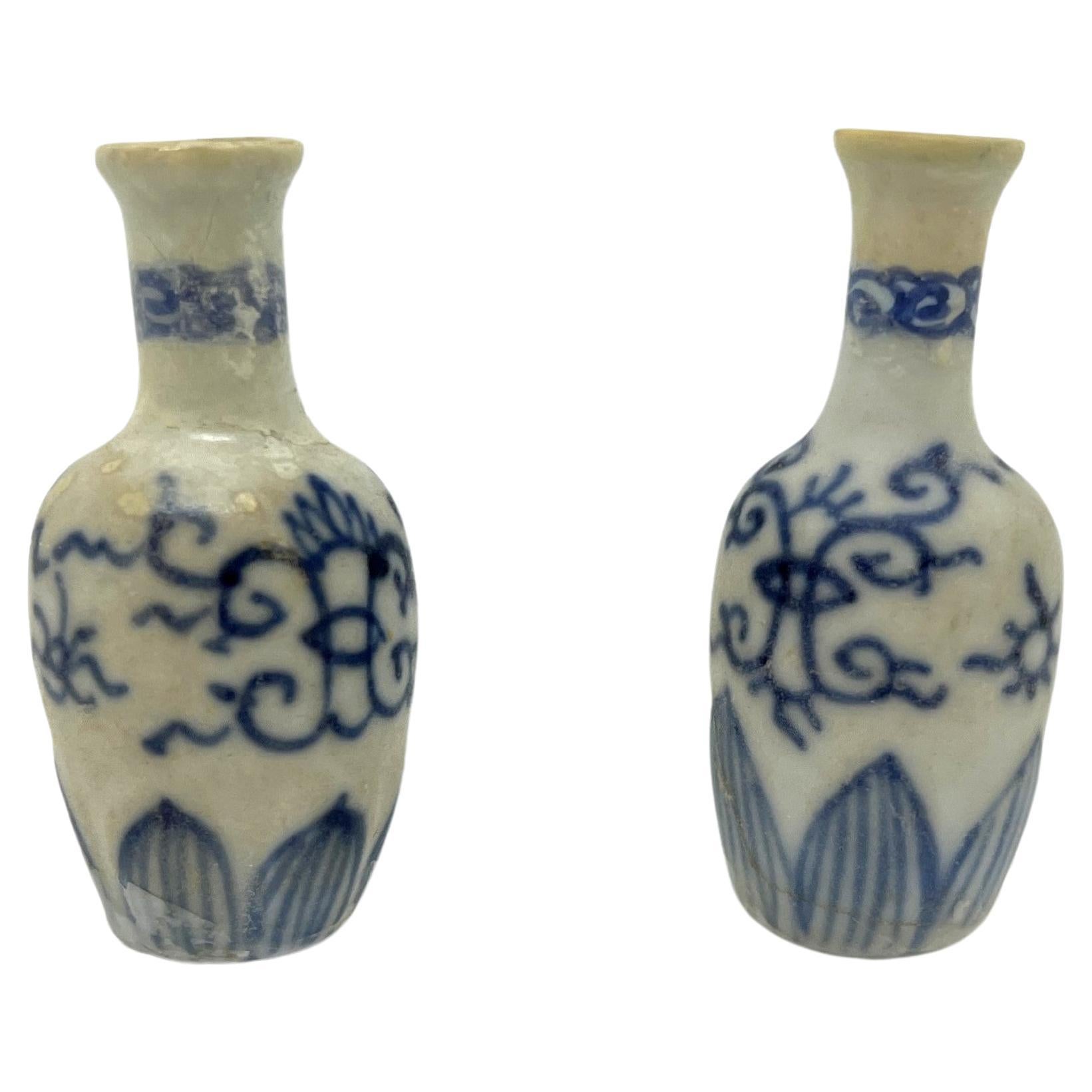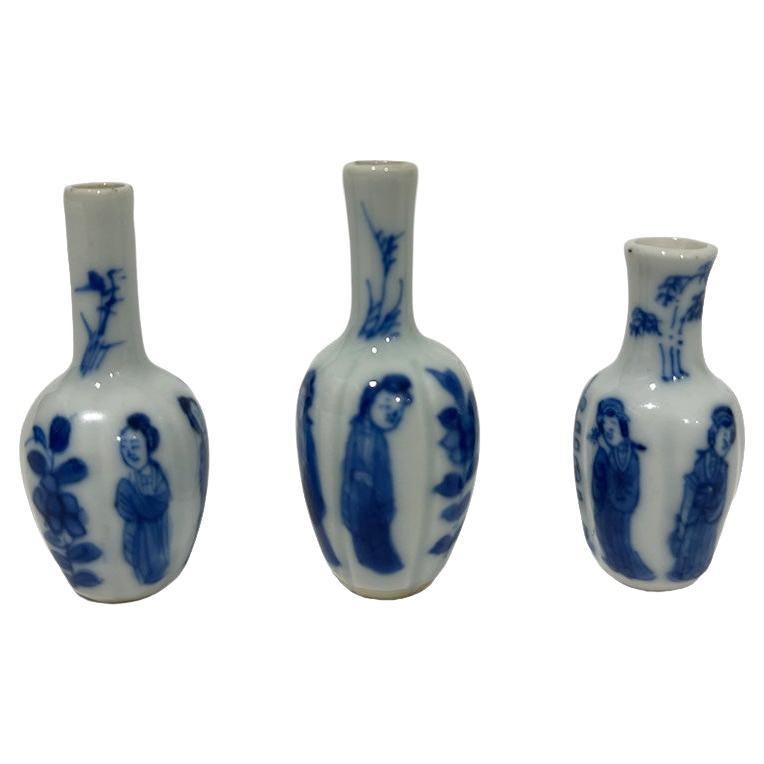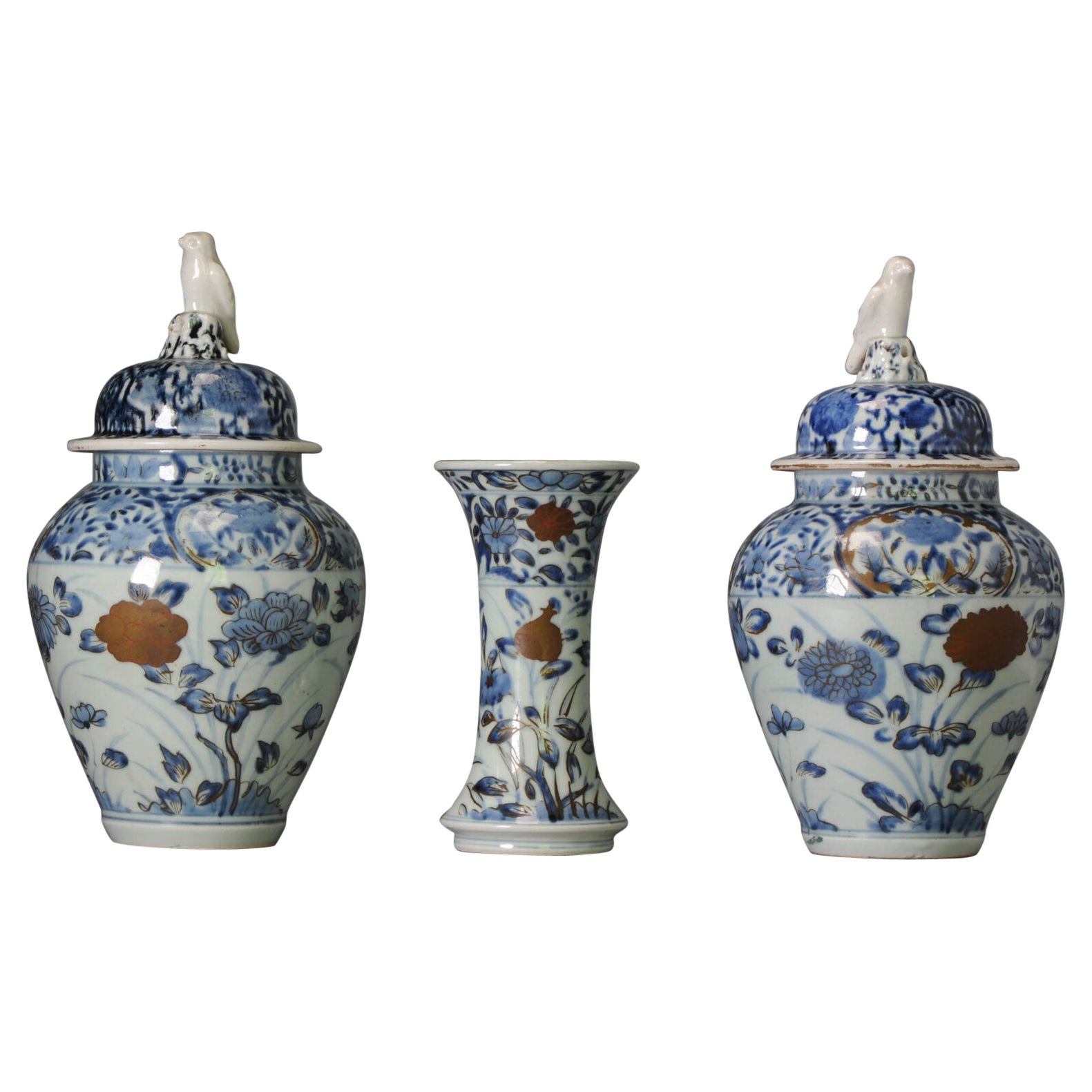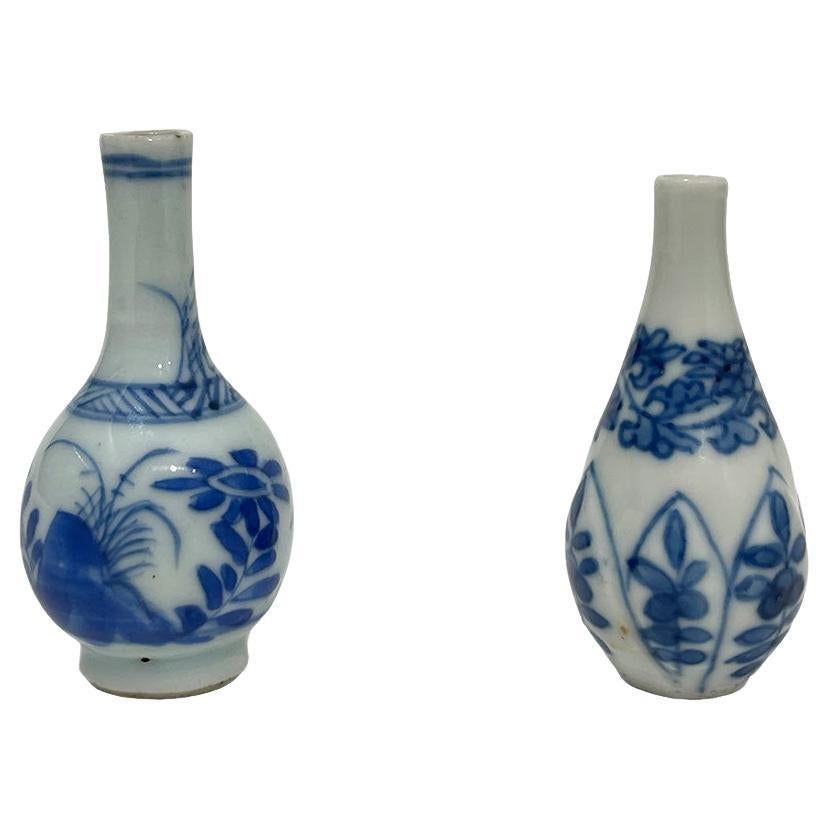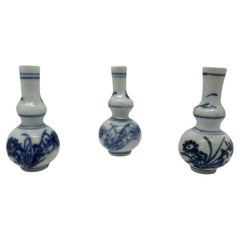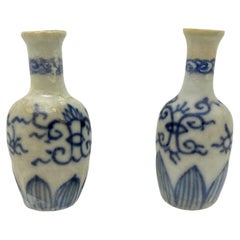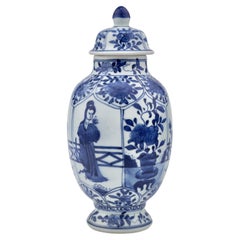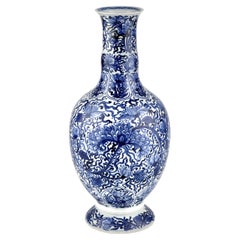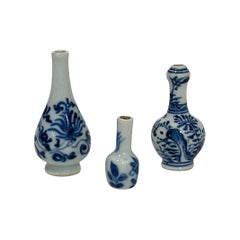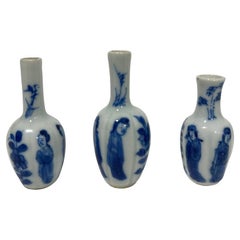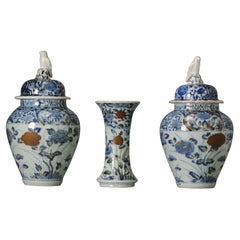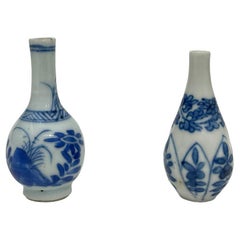Items Similar to Three Blue and White Miniature Vases Set, C 1725, Qing Dynasty, Yongzheng Era
Want more images or videos?
Request additional images or videos from the seller
1 of 6
Three Blue and White Miniature Vases Set, C 1725, Qing Dynasty, Yongzheng Era
$1,250
£947.67
€1,092.41
CA$1,760.42
A$1,952.18
CHF 1,025.73
MX$23,852.33
NOK 12,833.23
SEK 12,046.18
DKK 8,155.09
About the Item
* Set Item(3 vases)
During Yongzheng era, such miniatures were appreciated for their craftsmanship and aesthetic value. They were also often used in scholars' studios as part of the 'wenfang', or study room ensemble, which included various objects intended to inspire intellectual and artistic contemplation.
Furthermore, these miniature pieces could have been part of a 'dolls house' collection, which was a pastime among the wealthy and the nobility. Miniaturized versions of household items were created for the purpose of display in elaborate miniature houses, showcasing the owner's taste and wealth. In some cases, they were made as 'salesman samples' to demonstrate a potter's skill to potential customers without the inconvenience of transporting larger items.
Additionally, such miniatures were also produced for export to the West, where they became part of the trend for Chinoiserie, reflecting European fascination with Chinese art and design. Their size made them easily transportable and accessible to a wide range of collectors, further enhancing their appeal.
Period : Qing Dynasty, Yongzheng Period
Production Date : C 1725
Made in : Jingdezhen
Destination : Netherland
Found/Acquired : Southeast Asia , South China Sea, Ca Mau ship
Reference : Double checked with reference to the original catalogues
1) Tau Co Ca Mau(The Ca Mau Shipwreck) Catalogue 2002 / The National Museum of Vietnamese History
2) THE CA MAU SHIPWRECK PORCELAIN : from the Collection of Dr.Zelnik , 2000
3) Sotheby’s Amsterdam, 2007 : Made In Imperial China / Sotheby's
4) Asian Ceramic Found along Maritime Silk Route / National Maritime Museum of Korea
* The Ca Mau Cargo
The Ca Mau Cargo refers to a Chinese cargo sunken sometime between 1723 and 1735 off the coast of Vietnam’s farthest point in the South China Sea, discovered by Vietnamese fishermen in 1998. It is believed the ship was a Chinese merchant’s cargo on its way from Canton (Guangzhou) to Batavia when it caught fire and sank. The merchant had ordered the goods on board for Dutch traders, who had limited access to China and its ports.
* Porcelain for the European Market
The Ca Mau Cargo consisted of numerous types of porcelain, chinaware and blue and white wares, all designed for the European market. Blue and white ceramics recovered from the cargo appear decorated with the so-called ‘Scheveningen landscape’, also known as ‘Deshima décor’. This motif usually depicted a traditional Dutch fishing village, executed in Chinese style. Chinese wares with Western motives were extremely popular and made to order and were known as ‘China de commande’.
About the Seller
4.8
Gold Seller
Premium sellers maintaining a 4.3+ rating and 24-hour response times
Established in 1999
1stDibs seller since 2023
39 sales on 1stDibs
Typical response time: 4 hours
- ShippingRetrieving quote...Shipping from: seoul, Korea South
- Return Policy
Authenticity Guarantee
In the unlikely event there’s an issue with an item’s authenticity, contact us within 1 year for a full refund. DetailsMoney-Back Guarantee
If your item is not as described, is damaged in transit, or does not arrive, contact us within 7 days for a full refund. Details24-Hour Cancellation
You have a 24-hour grace period in which to reconsider your purchase, with no questions asked.Vetted Professional Sellers
Our world-class sellers must adhere to strict standards for service and quality, maintaining the integrity of our listings.Price-Match Guarantee
If you find that a seller listed the same item for a lower price elsewhere, we’ll match it.Trusted Global Delivery
Our best-in-class carrier network provides specialized shipping options worldwide, including custom delivery.More From This Seller
View AllThree Blue and White Miniature Vases, C 1725, Qing Dynasty, Yongzheng Era
Located in seoul, KR
During Yongzheng era, such miniatures were appreciated for their craftsmanship and aesthetic value. They were also often used in scholars' studios as part of the 'wenfang', or study ...
Category
Antique 1720s Vietnamese Qing Desk Sets
Materials
Ceramic
Two Blue and White Miniature Vases, C 1725, Qing Dynasty, Yongzheng Era
Located in seoul, KR
During Yongzheng era, such miniatures were appreciated for their craftsmanship and aesthetic value. They were also often used in scholars' studios as part of the 'wenfang', or study ...
Category
Antique 1720s Vietnamese Qing Antiquities
Materials
Ceramic
Blue And White Vase, Qing Dynasty, Kangxi Era, Circa 1690
Located in seoul, KR
Vung Tau Shipwreck Coralized Blue Underglazed Porcelain Lidded Vase. Almost perfectly Identical piece from Vietnamese Royal Family in United States provenance have been sold at other auction in California. This stunning porcelain lidded vase is elaborately decorated in a vivid blue underglaze with an ornate scene of concubines in a flower garden. The bottom of the vase bears a conch marking in underglazed blue, is a symbol of royalty, dignity and high rank, the 'Sacred Lungs of Buddha' and spiritual authority.
Period : Qing Dynasty, Kangxi reign
Production Date : 1690-1699
Made in : Jingdezhen
Destination : Amsterdam
Found/Acquired : Southeast Asia , South China Sea, Vung Tau Ship
Reference : Double checked with reference to the original catalogues
1) Christies Amsterdam 1992 - Vung Tau Cargo...
Category
Antique 1690s Vietnamese Qing Antiquities
Materials
Ceramic
Blue and White Vase from Vung Tau Ship, Qing Dynasty Kangxi Era, Circa 1690
Located in seoul, KR
The entire surface of the vase is adorned with elaborate chrysanthemum motifs, elegantly connected by flowing, curved stems, while the background's leaf patterns enhance its sense of...
Category
Antique 17th Century Vietnamese Qing Ceramics
Materials
Ceramic, Porcelain
Two blue and white jars, officials in garden, Rabbit mark to base, Ming dynasty
Located in seoul, KR
17th century, painted in underglaze blue with eight figures including officials in a garden landscape, marked on the bottom with a sitting rabbit(blue hare), Transitional period(Late...
Category
Antique 17th Century Hong Kong Ming Ceramics
Materials
Ceramic, Porcelain
Blue and White Porcelain Vase with Figures, 19-20th Century
Located in seoul, KR
A porcelain meiping vase decorated in underglaze cobalt blue with scholar and attendant figures in a natural landscape. The finely crackled glaze and soft brushwork evoke a sense of ...
Category
Antique 19th Century East Asian Qing Antiquities
Materials
Ceramic
You May Also Like
Chinese 18th Century Miniature Porcelain Blue and White Kangxi Vases
Located in Delft, NL
Chinese 18th century miniature porcelain blue and white Kangxi vases
Kangxi, (1662-1722)
With a scene of floral decor and 3 different sh...
Category
Antique 18th Century Chinese Antiquities
Materials
Porcelain
18th Century Chinese Porcelain Dollhouse Miniatures Blue and White Kangxi Vases
Located in Delft, NL
18th Century Chinese Porcelain Dollhouse Miniatures Blue and White Kangxi Vases
Three miniature Chinese porcelain dollhouse vases. Chinese...
Category
Antique 18th Century Chinese Antiquities
Materials
Porcelain
Antique Japanese Porcelain Garniture Vases Blue White Gold Edo Period, 17th C
Located in Amsterdam, Noord Holland
Amazing set for decorating your home. Interesting and beautifully made Birds of Prey on a rock as handles on the lids.
The two porcelain Arita baluster vases with covers. All decora...
Category
Antique 17th Century Japanese Vases
Materials
Porcelain
$2,855 Sale Price / set
20% Off
18th Century Chinese Porcelain Dollhouse Miniatures Blue and White Vases
Located in Delft, NL
18th Century Chinese Porcelain Dollhouse Miniatures Blue and White Vases
Two miniature Chinese porcelain dollhouse vases. Chinese porcel...
Category
Antique 18th Century Chinese Antiquities
Materials
Porcelain
Very Large Impressive Trio Collection of 3 Blue & White Chinese Vases
Located in Hopewell, NJ
An antique collection of 3 very large blue and white Chinese vases, two are a pair but not exactly alike. Beautiful decoration and si...
Category
Antique 19th Century Chinese Chinese Export Vases
Materials
Ceramic
$3,360 Sale Price / set
20% Off
Chinese Blue and White Porcelain Vessels, 5
Located in Astoria, NY
Collection of Five Chinese Blue and White Porcelain Vessels, comprising: crackle glazed bud vase with landscape scene and silver mounted rim, ovoid vase with landscape, square tapere...
Category
20th Century Chinese Qing Ceramics
Materials
Porcelain
$1,450 / set
More Ways To Browse
Blue And White Miniatures
Qing Dynasty Blue And White
Antique Miniature Houses
Antique Miniature Vases
Qing Dynasty Imperial
Asian Display Case
Korean Blue And White
Canton Blue And White
Miniature Chinese Vases
Asia Dolls
Canton Porcelain Blue
Korean White Vase
Blue And White Chinoiserie Vase
Sothebys 2000
Canton Vase
Salesman Sample
Salesman Samples
Cargo Porcelain
